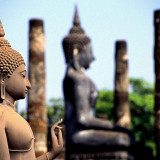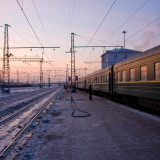Lijiang: A Gateway to Ancient Local Life in China
Lijiang is a UNESCO World Heritage Site in China’s Yunnan province. Located south of Tibet and east and north of Myanmar, Yunnan is China’s most ethnically diverse province with more than 40 ethnic minority groups.
Lijiang itself contains one of the country’s best preserved ancient towns, a warren of twisting alleyways, miniature canals and architecture that evokes everything you’d expect from China’s imperial days. It could be a movie set for dynastic China (and has been).
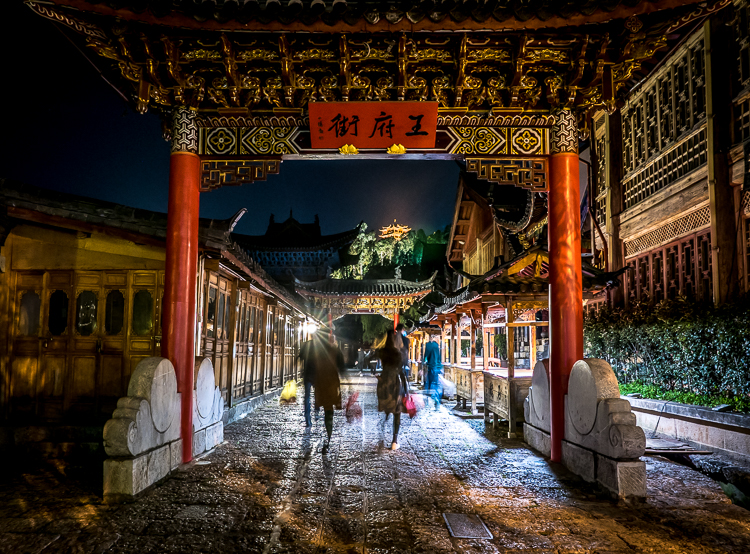
Lijiang at night. Credit: Steve Brock.
Modern Lijiang
Most of those intriguing old wooden buildings have been converted into small stores. You’ll see shops selling the same products over and over: tea, flower-petal cookies, African drums, jewelry, clothing, leather goods and a range of other souvenirs. This seems to work well for the majority of tourists there: domestic visitors from other parts of China. They come seeking a connection to “old China” but with sufficient modern conveniences and shopping aplenty.
While the crowds and the corresponding commercialization can feel overwhelming and overly kitschy at times, this ancient city is well worth visiting.
YOU MIGHT ALSO LIKE:
8 Unforgettable UNESCO World Heritage Sites in Vietnam
Must-see spots in Lijiang
Here’s what you shouldn’t miss:
- Black Dragon Pool: a lovely park at the north end of town
- Jade Dragon Snow Mountain: a scenic Alp-like peak of over 18,000 feet with cable car rides to its glaciers and hiking opportunities
- Leaping Tiger Gorge: one of the best trekking opportunities in the region
- The villages of Shuhe and especially Baisha: both quieter and less touristy than Lijiang but with equally intriguing streets and architecture
Beyond the main attractions, however, here are some compelling aspects of Lijiang that will surprise and delight travelers:
Flower-lined canals
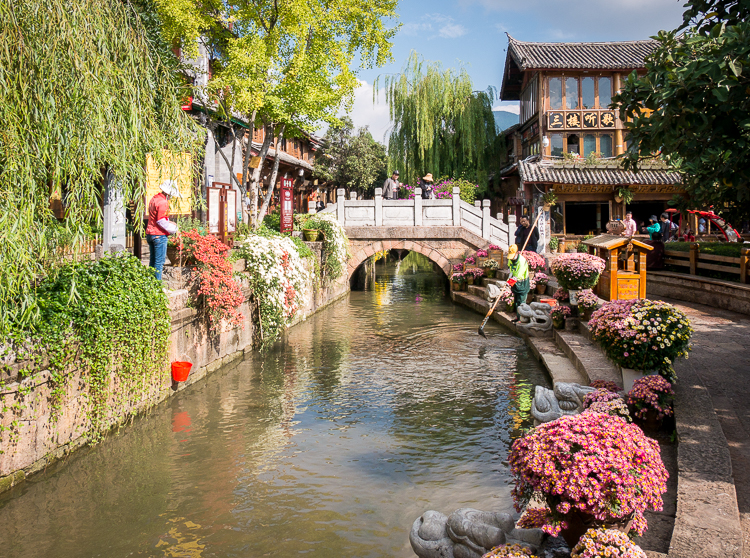
Flower-lined canal. Credit: Steve Brock
Small canals run throughout the old town and many, particularly around Lijiang’s main square, are lined with thousands of fresh flowers most of the year. It adds a festive feel and isn’t something you’ll likely see elsewhere in China.
Old meets new in architecture
One could grouse about the gentrification of Lijiang. But builders and restorers have done a great job of maintaining the ancient-looking exteriors of the buildings while creating gorgeous modern interiors. Step into some of the inns or teahouses, and you could be in a boutique or gallery in Toronto or New York in terms of lighting, displays and overall aesthetics. Beautiful.
Quieter streets with local life
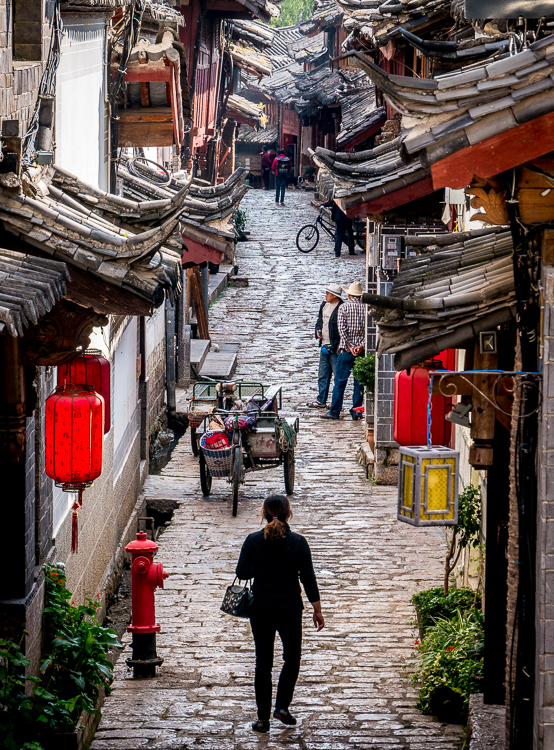
Quiet street. Credit: Steve Brock
Trying to navigate the primary thoroughfares in the evenings you can feel like a salmon swimming upstream in a relentless, noisy current. Or if you hang around the main square at night, it’s hard to have a conversation above the music from dozens of bars and nightclubs, and the incessant murmuring of the crowds. But wander two blocks away, and you’ll find peaceful streets with barely a person in sight.
My advice: get out early in the morning. In addition to the elderly population doing tai chi or line dancing in the park, you’ll see locals washing clothes or food in the canals. Peace and quiet are never that far away.
Zhongyi Market

Produce at Zhongyi Market. Credit: Steve Brock.
Besides the back streets, the best place to see the non-touristy side of Lijiang is the Zhongyi Market in the town’s south end. Every day, locals gather to buy and sell produce, meat and fish, spices, mushrooms, tea of all kinds and various household items, party decorations and clothing.
You can taste freshly roasted chestnuts while someone grinds you a key or stitches a new sole to your shoe, all while you wait, all within a few feet of each other. It’s a wonderful market for the variety, the regularity and the fact that nobody pays you much attention, even if you’re taking photos. Dive in and get lost.
Authentic art
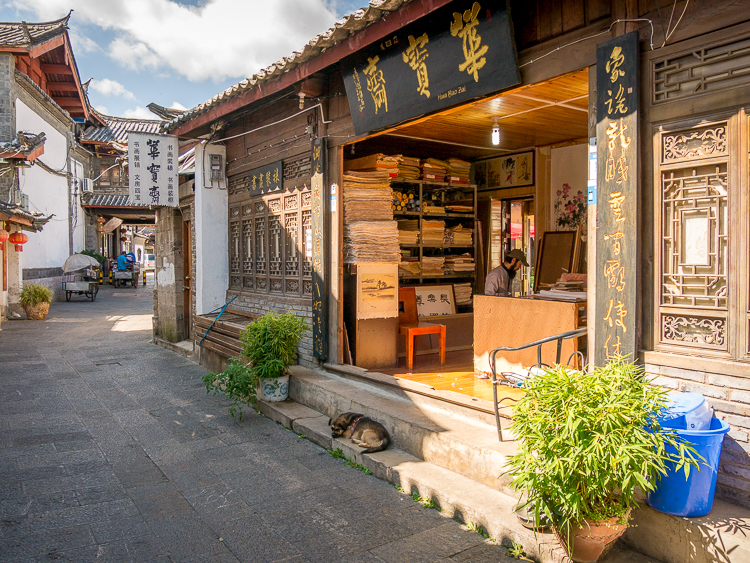
Paper and painting seller. Credit: Steve Brock
Not every store in Lijiang is a carbon copy of the others. Just north of the Zhongyi Market is a painting shop with beautiful scrolls, calligraphy, and exceptional hand-made paper.
In the western section of town near the Christian Church is a courtyard dedicated to local arts and crafts. (The church only serves as a monument: people aren’t allowed to worship there). Inside you’ll find drawings, paintings, tea sets and an impressive array of Dongwa artwork from local Naxi artists.
Friendly people
I met wonderful people at the market. They described the differences between five different types of eggs on display. I was instructed on how to cook one of the unfortunate frogs packed into a tank. They explained why local peaches are bigger than others, and various other insights into local culinary life.
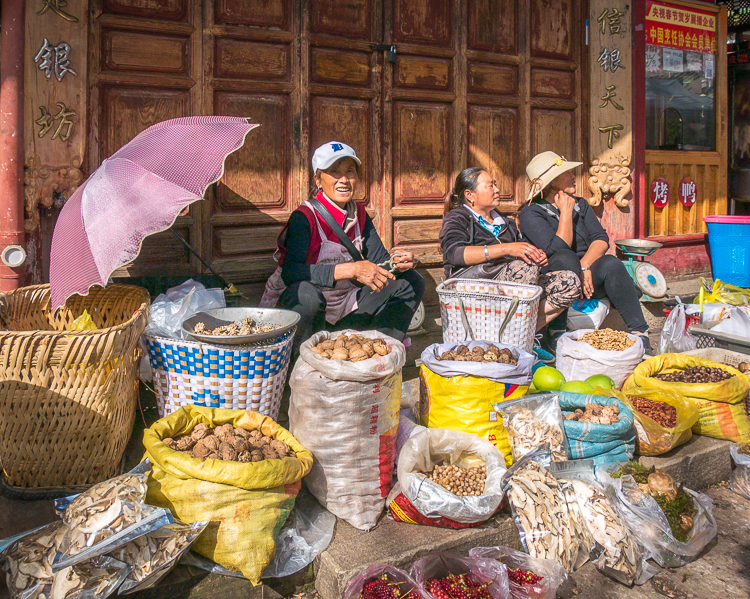
Credit: Steve Brock
I also spent time in the park at the south end of the old town in the morning. A local Naxi man explained the costumes he and others wear for dances they perform in the adjacent theater.
I rarely felt like someone was trying to sell me something in Lijiang, despite the consumer presence. But I did feel people wanted to connect and learn more.
There’s no doubt that Lijiang has become rather over-the-top in terms of commercialization. But for the ancient city and in the sights surrounding it, a visit is worthwhile, and truly memorable.
If I were to go again, I’d probably stay in Baisha (about six miles north of Lijiang’s old town). I would definitely spend more time in Shaxi. It’s a smaller and more “authentic” town two hours by bus south of Lijiang. But Lijiang itself is a perfect gateway into small-town local life in China, and a good base for exploring surrounding areas.
Have you been to Lijiang? What was your impression of this ancient city? Let us know in the comments below! And don’t forget to follow us on Instagram and Twitter for more travel inspiration.
Latest posts by Steve Brock (see all)
- Lijiang: A Gateway to Ancient Local Life in China - August 14, 2018

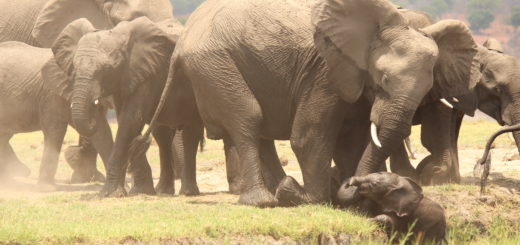




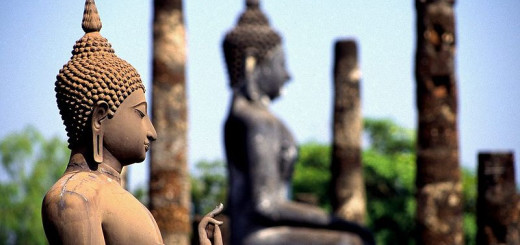

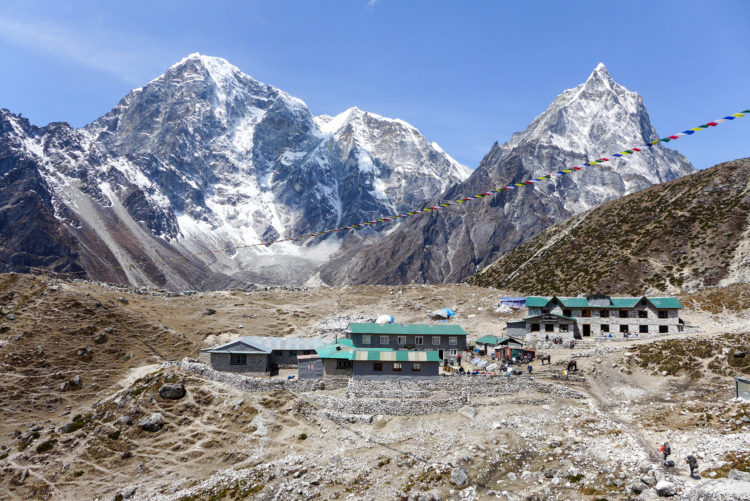 Almost all the tea houses in
Almost all the tea houses in 






